Searching for a bold, eye-catching hair transformation? Calico hair might be exactly what you’ve been looking for! This striking multi-colored trend draws inspiration from calico cats with their beautiful patchwork of colors, bringing the same captivating aesthetic to your locks.
We’ve seen color trends come and go, but calico hair stands out for its unique combination of three or more distinct hues placed strategically throughout the hair. Unlike traditional highlights or balayage, this technique creates a more dramatic, patchwork effect that’s sure to turn heads. Whether you’re considering a subtle version with natural tones or a bold statement with vibrant colors, calico hair offers endless possibilities for customization.
What Is Calico Hair: Understanding This Unique Hair Trend
Calico hair draws inspiration directly from the distinctive tri-color pattern found on calico cats, featuring a mesmerizing blend of three or more colors strategically placed throughout the hair. Unlike traditional highlighting techniques that focus on creating subtle dimension, this trend embraces bold color blocking with clearly defined sections of different hues. The striking pattern typically includes a base color (often blonde, brown, or black) complemented by patches of contrasting colors, creating a patchwork effect that’s both playful and artistic.
The beauty of calico hair lies in its incredible versatility, allowing for both subtle natural interpretations and wildly vibrant expressions. Many stylists combine warm honey tones with rich chocolates and creamy blondes for a more natural approach, while others incorporate vivid purples, blues, and pinks for those seeking a more dramatic statement. This technique differs significantly from traditional balayage or ombré because the color placement appears more random and patchwork-like rather than following a gradual transition.
Professional colorists achieve the calico effect through careful sectioning and color application, often using foils or plastic wrap to keep the distinct colors from blending together. The process typically requires multiple hours in the salon chair, especially for those transitioning from darker hair colors. Maintaining calico hair demands dedicated care with color-safe products and regular touch-ups every 6-8 weeks to keep the distinct color sections vibrant and well-defined.
Fashion-forward individuals particularly appreciate calico hair for its uniqueness and the way it allows for personal expression through custom color combinations. The trend has gained important popularity on social media platforms like Instagram and TikTok, where colorists showcase their creative interpretations of this feline-inspired style. Even though requiring considerable maintenance, many enthusiasts find the eye-catching results well worth the investment of time and care needed to keep their calico hair looking its best.
The Science Behind Calico Hair: How Multi-Colored Patterns Are Created
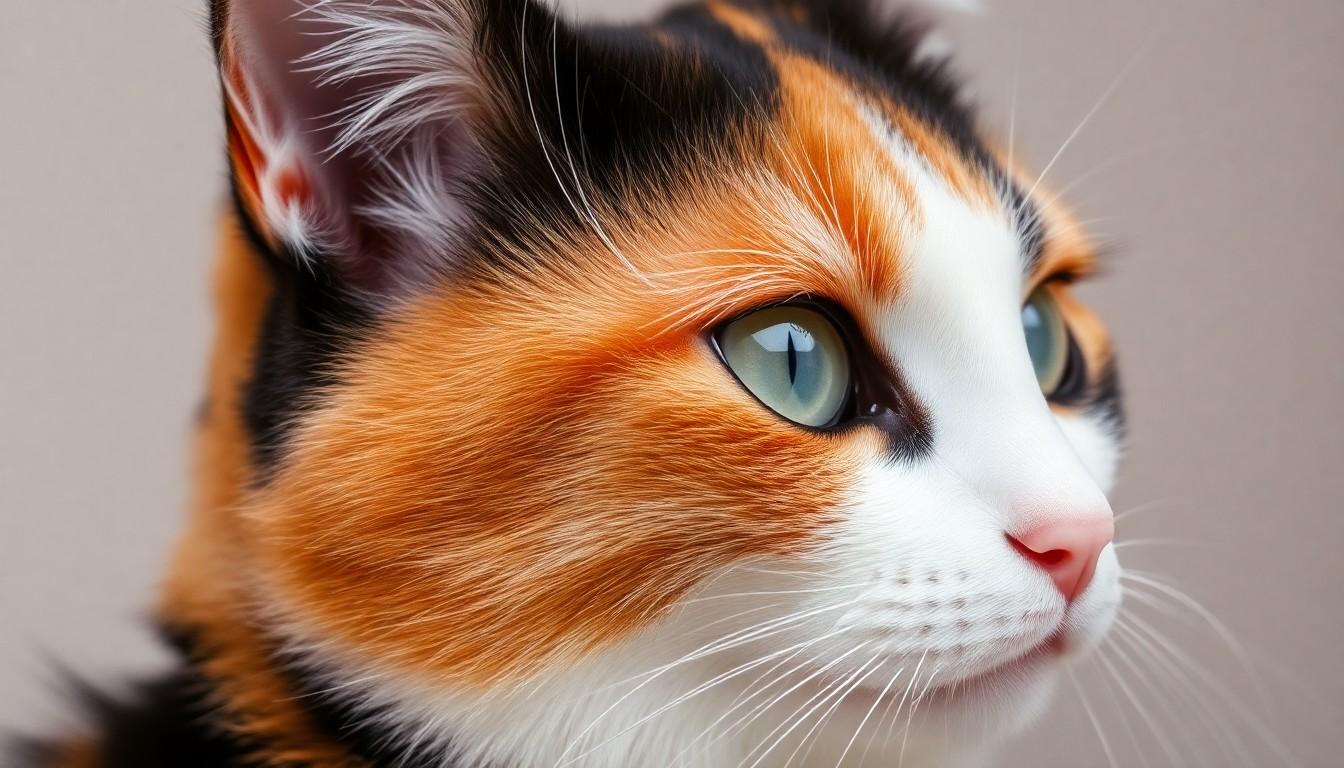
Natural Calico Hair Phenomena
Calico hair derives its name and inspiration from the distinctive tri-color pattern found in calico cats, featuring a captivating mix of black, orange, and white fur. Female cats predominantly display this unique coloration due to exact genetic mechanisms that create the patchwork effect.
The foundation of calico patterns lies in sex chromosomes, particularly the X chromosome where genes for orange and black fur colors are located. Female cats possess two X chromosomes (XX), allowing them to carry both color genes simultaneously. This genetic setup enables the random inactivation of one X chromosome in different cells throughout the cat’s body, known as X-chromosome inactivation. Through this process, some cells express the gene for black fur while others express the gene for orange fur, creating the characteristic patched appearance.
White sections in calico patterns result from a completely separate genetic mechanism involving the piebald gene. Located on a different chromosome, this dominant gene overrides both orange and black color expressions, effectively creating colorless areas that appear white. The combination of these genetic factors produces the striking three-color mosaic that has inspired the popular hair trend.
Genetic Factors That Influence Hair Color Variation
X-linked genes play a crucial role in creating the distinctive calico pattern, with recent research identifying the orange gene as influencing hair color in ways never before observed in other animals. Male cats rarely display calico patterns because they typically have only one X chromosome (XY), making it genetically impossible to carry both orange and black color genes simultaneously.
Methylation processes significantly impact gene expression in calico patterns. This biological mechanism involves adding methyl groups to DNA strands, effectively turning exact genes on or off in different body areas. The selective activation of color genes across different sections of fur creates the multi-colored pattern that defines the calico appearance.
Chromosomal abnormalities explain the rare occurrence of male calico cats, which can only display this pattern if they have an additional X chromosome (XXY), a condition known as Klinefelter syndrome. These genetic exceptions further illustrate how the calico pattern results from complex interactions between X-linked genes, random chromosome inactivation, and the influence of the piebald gene for white coloration.
The intricate genetic interplay behind natural calico patterns provides colorists with scientific inspiration when creating multi-colored hair designs. Understanding these biological mechanisms helps professionals better emulate the authentic patchwork effect that makes calico hair so visually striking.
10 Stunning Calico Hair Color Combinations to Try in 2023
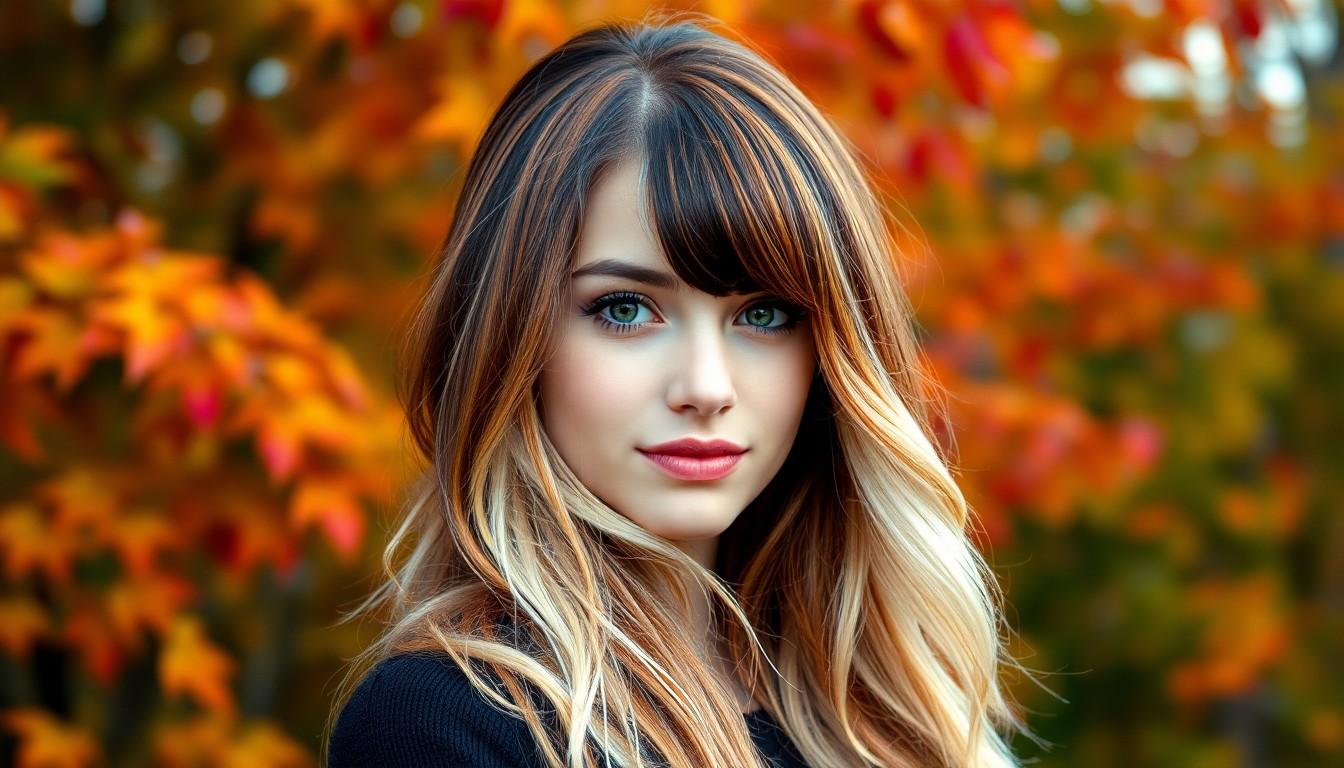
Bold Primary Color Combinations
Bold primary color combinations create the most authentic calico hair look with striking contrast. The classic calico pattern features rich auburn, black, and platinum blonde sections that mimic traditional calico cat coloring while adding natural warmth to any complexion. This combination works perfectly for fall and creates a sophisticated yet eye-catching effect. Vibrant primary colors like orange, black, and blonde offer an even more dramatic interpretation that truly stands out in a crowd. These bold color blocks create a memorable patchwork effect that showcases the essence of the calico trend while allowing for personal expression through strategic placement of each hue.
Subtle Pastel Calico Options
Subtle pastel calico options provide a softer approach to this trending style. Icy pastels including frosty lavender, icy blue, and soft silver create a wintery take on the calico effect, perfect for those wanting a cooler color story while maintaining distinct color patches. Soft pastel combinations featuring baby pink, pale blue, and light yellow deliver a more delicate version of the look while still maintaining the characteristic blocked coloring technique. These gentler hue arrangements work beautifully on lighter base colors and offer a more approachable entry point for those new to the calico trend without sacrificing the distinctive patchwork appearance.
Nature-Inspired Calico Patterns
Nature-inspired calico patterns bring a more organic feel to this multi-dimensional color technique. Earth tones paired with metallics create a sophisticated combination using deep brown, copper, and metallic gold sections that catch the light beautifully and complement fall wardrobes perfectly. Autumnal color stories featuring deep reds, oranges, and yellows evoke the changing colors of fall leaves while maintaining the structured patchwork effect essential to calico hair. Brown hair with strategically placed bleached tips in various colors offers a more subtle take on the trend that blends natural bases with bold accent colors. These nature-inspired combinations provide a wearable yet distinctive approach to calico hair that works across various skin tones and personal styles.
How to Achieve Calico Hair: Step-by-Step Dyeing Techniques
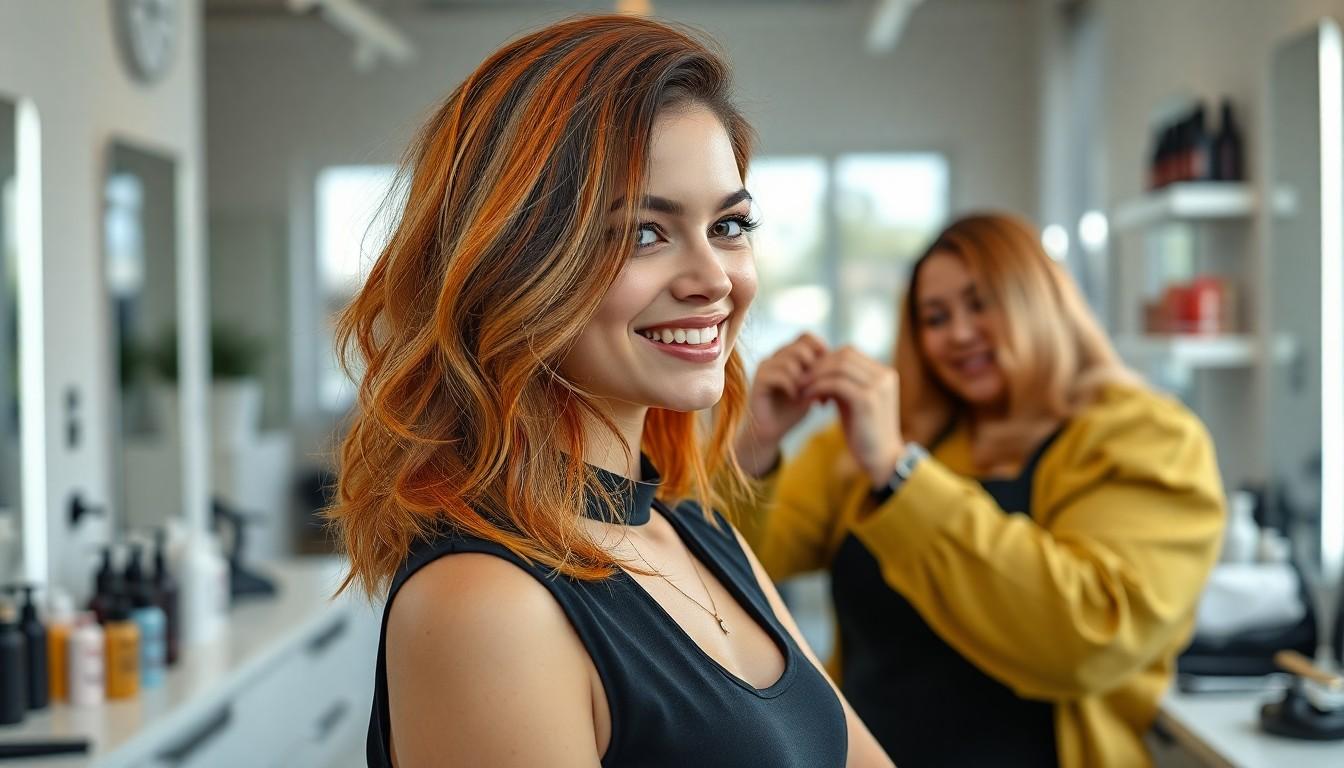
Transforming your hair into a stunning calico pattern requires exact techniques and careful color application. Whether you’re heading to a salon or feeling brave enough to try it at home, here’s what you need to know about creating this multi-dimensional look.
Professional Salon Techniques
Professional stylists are best equipped to achieve the perfect calico hair due to the complexity of working with multiple colors and lightening processes. The process typically begins with a thorough consultation to determine the ideal color combination for your skin tone and desired maintenance level. Bleaching serves as a crucial first step, with professionals strategically lightening exact sections of hair while leaving others untouched for contrast. Various coloring techniques can then be employed based on your preference – from low-maintenance calico ombrè or balayage that concentrates color from mid-lengths to ends for easier grow-out, to bold chunky highlights that create a more graphic and dimensional appearance.
Many stylists weave babylights or traditional highlights and lowlights throughout the hair for a more natural-looking interpretation of the calico palette. This method requires expert color formulation, as professionals work with different permanent and demi-permanent dyes to achieve proper saturation and dimension. The entire process often takes several hours in the salon but results in a precisely executed, damage-minimized calico pattern that would be difficult to achieve at home.
DIY Calico Hair Methods
Attempting calico hair at home comes with important risks but remains possible for those willing to proceed with caution. Home bleaching forms the foundation of DIY calico hair, requiring you to carefully section and lighten exact portions of your hair before applying different colored dyes. This approach demands meticulous attention to timing and product application, as improper bleaching can lead to severe hair damage and uneven color results.
Less permanent options offer safer alternatives for at-home experimentation. Temporary or semi-permanent dyes allow you to test the calico look without long-term commitment, though these products typically won’t deliver the same vibrancy or longevity as professional treatments. The simplest and safest DIY method involves using clip-in extensions in contrasting colors to achieve the calico effect without chemical processing. Brunettes can add orange and blonde extensions, while blondes might incorporate black and orange pieces for an instant calico transformation without any damage risk.
Hair health should remain your primary consideration when attempting DIY calico hair. The process involves multiple chemical treatments that can significantly compromise your hair’s integrity if not done correctly. Professional guidance provides the safest path to achieving this complex, multi-colored style, especially for those with previously processed or damaged hair.
Maintenance Tips for Keeping Your Calico Hair Vibrant
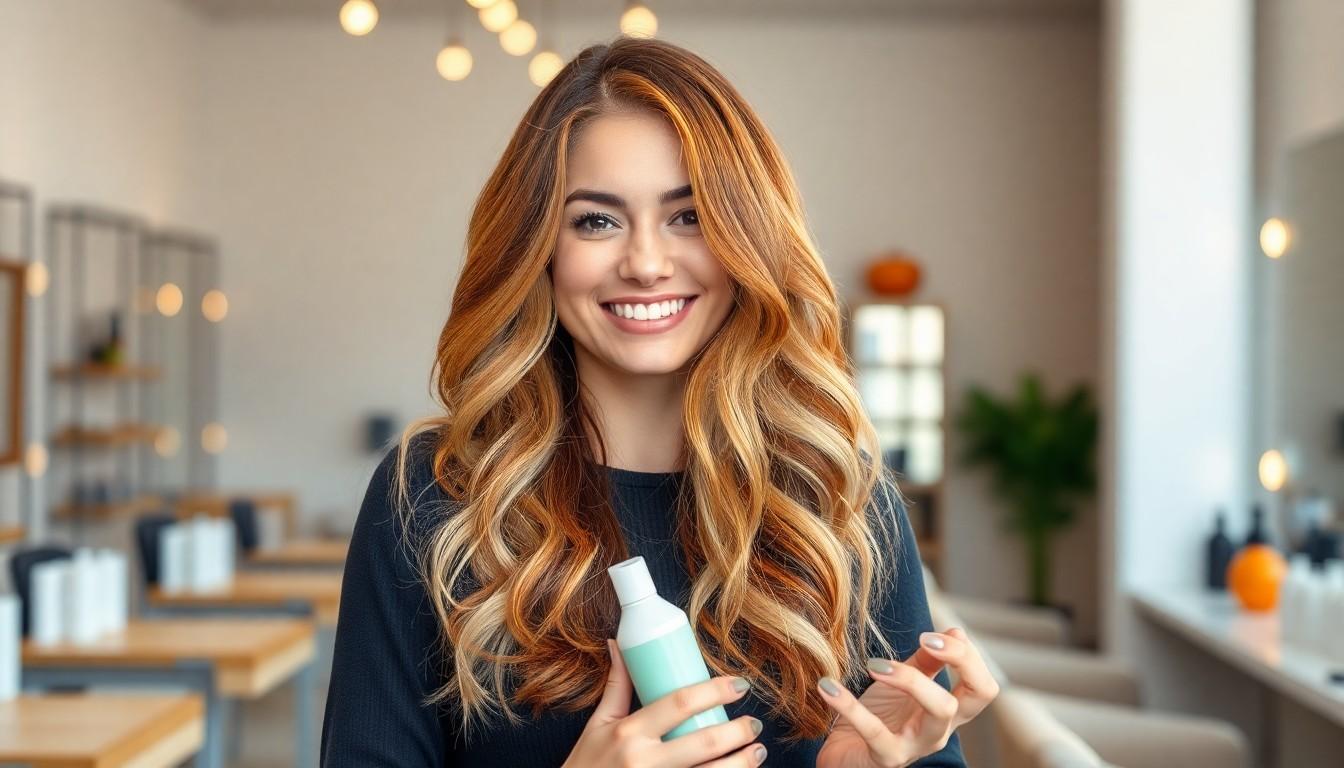
Maintaining the vibrancy of your calico hair requires dedicated care and attention to prevent color fading. These essential maintenance tips will help preserve those beautiful multi-colored patches that make your calico style stand out.
Specialized Hair Care Products
Investing in color-exact products is crucial for maintaining your calico hair’s vibrancy. Color-protecting shampoos and conditioners like IdHAIR Elements Xclusive Colour Shampoo offer superior protection with their sulfate-free formulas enriched with sunflower seed oil and blueberry extract. These specialized ingredients create a protective shield against UV damage and free radicals that can cause premature fading.
Heat protectant sprays should become your best friend when styling calico hair, as they form a protective barrier between your vibrant colors and the damaging effects of hot tools. We recommend applying a quality heat protectant before using any styling tools to maintain color integrity and prevent unnecessary fading.
Hair oils provide another layer of protection and nourishment for color-treated locks. K18 Hair Oil works wonders when applied before drying and after styling, helping to seal in color while keeping your calico hair looking healthy and glossy. Regular deep conditioning treatments applied weekly can significantly improve moisture retention, which is essential for maintaining vibrant color patches.
Color-Preserving Washing Techniques
Gentle washing techniques make a substantial difference in preserving your calico colors. Always use cold or lukewarm water instead of hot water, as heat accelerates color fading by opening the hair cuticle and allowing pigments to escape. Hot water strips natural oils along with artificial color, leading to both dryness and dullness.
Limiting your hair washing frequency helps maintain color intensity longer. Over-washing is one of the main culprits behind premature color fading, so try extending the time between washes using dry shampoo when necessary. This approach helps preserve both your color investment and natural oils that keep hair healthy.
Creating a color-safe washing routine involves using the right products in the right way. Start with a sulfate-free shampoo applied only to your roots, allowing the suds to gently cleanse the lengths without directly scrubbing colored sections. Follow with a color-protecting conditioner focused on mid-lengths and ends to seal the cuticle and lock in color.
Regular salon touch-ups every 6-8 weeks ensure your calico pattern remains vivid and well-defined. Professional colorists can refresh fading sections and address any damage before it impacts your overall look. Scheduling consistent appointments helps maintain the distinctive color blocking that makes calico hair so striking.
Celebrity Inspiration: Famous Faces Sporting Calico Hair Styles

While calico hair continues to gain momentum as one of the most eye-catching color trends in the hair industry, it’s worth noting that celebrity adoption of this exact style is still emerging. Currently, mainstream celebrities haven’t been widely documented sporting the distinctive tri-color patchwork pattern that defines true calico hair.
The trend is primarily flourishing within social media communities, particularly on platforms like Instagram and TikTok, where hair color enthusiasts and innovative stylists showcase their interpretations of the calico aesthetic. As with many bold hair color trends, we expect to see this style gradually making its way into celebrity circles as it continues to gain popularity.
For those seeking inspiration, your best resources for calico hair ideas currently include:
- Professional hair colorists’ portfolios on social media
- Hair color inspiration accounts on Instagram and TikTok
- Fashion forward influencers who typically embrace cutting-edge color trends
- Hair color competition entries that showcase innovative techniques
The distinctive nature of calico hair—featuring three or more clearly defined color sections—makes it a perfect statement look for performers, models, and fashion-forward celebrities who enjoy pushing boundaries with their appearance. Given its rising popularity and the cyclical nature of beauty trends, we anticipate that more famous faces will begin experimenting with this multi-dimensional color approach in the near future.
As this trend continues to evolve, we recommend following leading hair colorists and style publications to stay updated on which celebrities might be among the first to showcase calico-inspired looks on red carpets and in media appearances.
Common Challenges With Calico Hair and How to Overcome Them
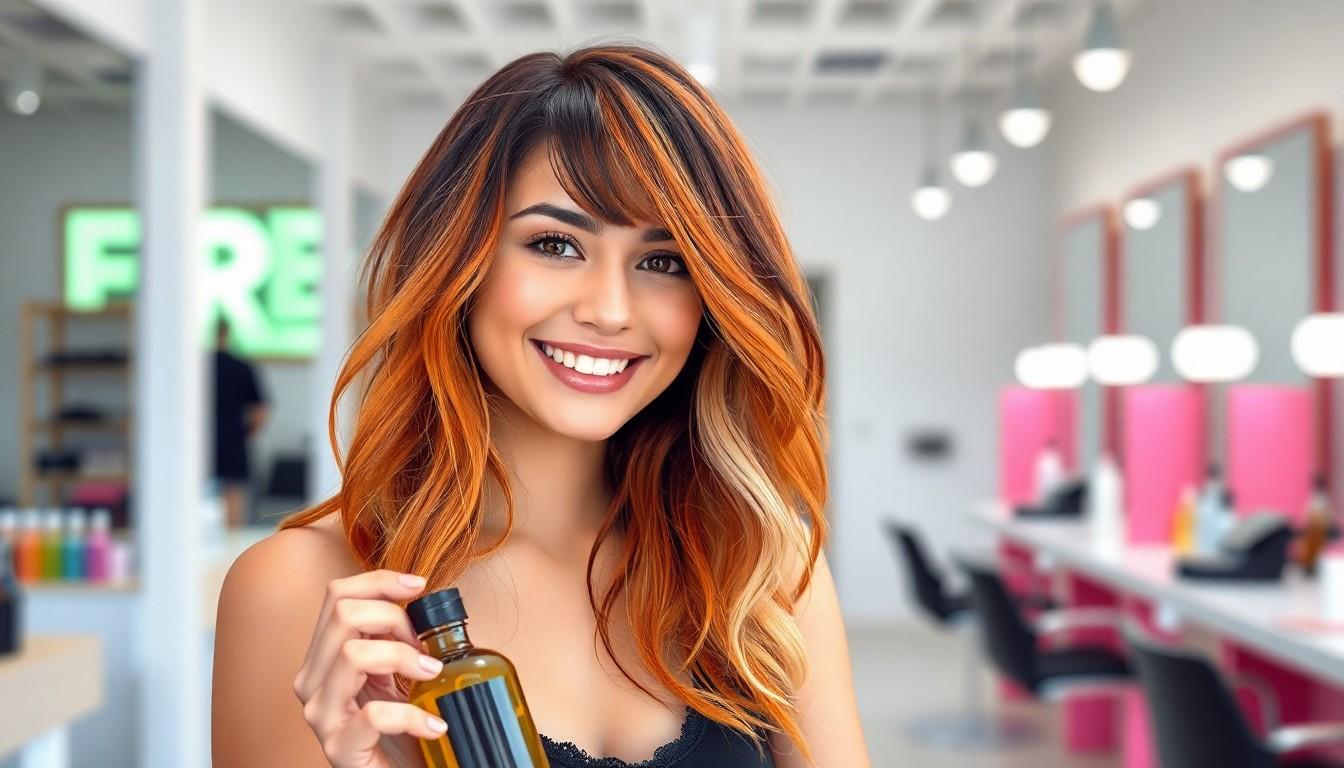
Color Maintenance
Maintaining vibrant colors stands as the primary challenge for calico hair enthusiasts. The multi-colored patchwork effect quickly loses its charm when colors start to fade. We recommend washing your hair exclusively with cold water, as hot water significantly accelerates color fading. Color-safe shampoos and conditioners formulated specifically for vivid colors will also extend the life of your calico pattern.
Color Bleeding
Unwanted color bleeding between different sections can ruin the distinct patchwork effect that makes calico hair so striking. To prevent this issue, regular color-depositing treatments help maintain clear boundaries between different colored sections. Avoid using hot styling tools daily and steer clear of harsh clarifying shampoos that strip color. Using shower caps to protect certain sections when washing can also minimize bleeding between colors.
Hair Health Concerns
Multiple bleaching and coloring processes required for achieving calico hair can severely damage your hair structure. Products like K18, which penetrate deep into hair fibers to repair broken bonds, prove essential for maintaining hair integrity. Deep conditioning treatments applied weekly will provide necessary moisture to counteract the drying effects of chemical processing.
Styling and Layering Challenges
Calico hair requires strategic layering to properly showcase the multi-colored effect. Without proper cutting techniques, the colors may appear flat or unevenly distributed. Professional stylists recommend adding lots of layers and texture to distribute the colors evenly throughout the hair. This approach creates dimension and allows each shade in your calico pattern to shine.
Color Refresh Difficulties
Keeping calico hair looking fresh demands regular and somewhat complex touch-ups. The refresh process involves precise color application to maintain clear boundaries between different colored sections. We’ve found that touch-ups every 4-6 weeks are necessary to maintain the vibrant, distinct look of calico hair, with exact attention needed for root regrowth areas.
Time and Effort Investment
The important time commitment required for maintaining calico hair catches many by surprise. Initial coloring sessions often take several hours in the salon, with touch-ups requiring similar dedication. Those with perfectionist tendencies may find the maintenance particularly challenging, as the distinctive patchwork effect demands precision and attention to detail at every stage.
Expert Tips for Calico Hair Success
- Cold Water Washing: Always rinse your hair with cold water to seal the cuticle and lock in color molecules.
- Specialized Hair Care: Invest in professional color-preserving products and bond-building treatments like K18 to maintain both color vibrancy and hair health.
- Strategic Heat Styling: Minimize heat styling and always use heat protectants when necessary to prevent color fading.
- Professional Guidance: Consult experienced colorists who understand the technical requirements for successful calico coloring and maintenance.
- Regular Touch-ups: Schedule consistent salon appointments for color refreshing to maintain the sharp contrast between colored sections.
- Sectional Care: Treat different colored sections with appropriate care, using color-depositing conditioners matched to each shade.
By addressing these challenges proactively, you can enjoy the striking beauty of calico hair while minimizing damage and maintaining its distinctive multi-colored pattern for longer periods.
Is Calico Hair Right for You? Considerations Before Taking the Plunge
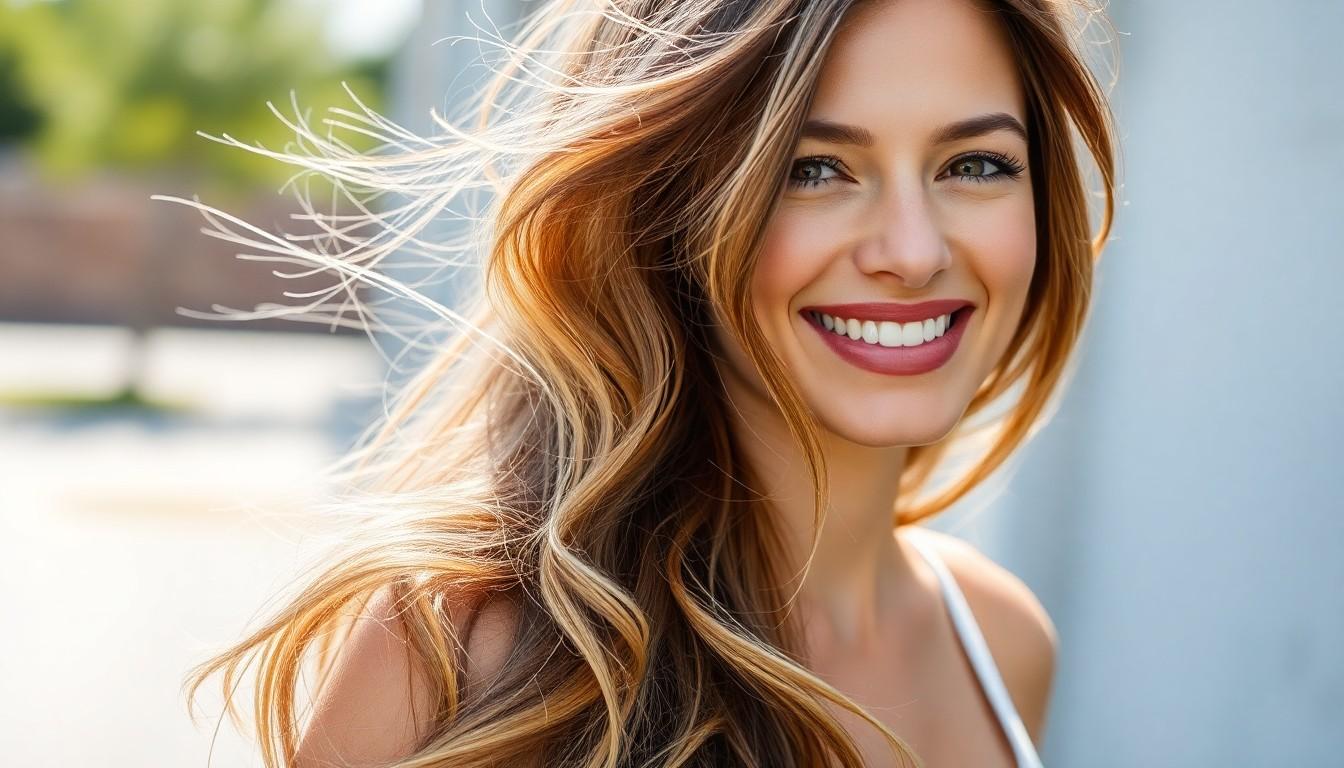
Color Selection and Placement
Choosing the right color combination forms the foundation of a successful calico hair transformation. Advanced color techniques require precision and a solid understanding of color theory, as calico coloring typically involves selecting three to five complementary or contrasting shades. Your stylist will need to choose a dominant base color, secondary accent shades, and at least one bold statement hue to create that distinctive calico patchwork effect. Unlike traditional foil patterns that follow symmetrical placement, calico coloring creates irregular, organic sections allowing colors to flow naturally into each other for a more authentic look.
Maintenance Requirements
Calico hair offers surprisingly low maintenance compared to other multi-color techniques. Since this style often incorporates natural tones, regrowth typically appears more subtle and less noticeable than with solid colors. We recommend scheduling touch-ups every 6-8 weeks to maintain the vibrancy of your color sections. Color-safe products will become essential allies in preserving your unique color blend between salon visits.
Consultation and Planning
Professional guidance proves invaluable before embarking on your calico hair journey. A thorough consultation with an experienced colorist should assess your natural base color, previous chemical treatments, and desired outcome. Strategic sectioning requires careful planning to ensure each shade complements neighboring hues while maintaining visual balance throughout your hair. Your stylist should create a customized plan that accounts for your face shape, skin tone, and lifestyle needs.
Hair Health Considerations
Multiple processing stages may be necessary to achieve a true calico effect, especially if you’re incorporating bold contrasting colors. Selecting an appropriate hair developer becomes crucial to achieve the perfect level of lift while protecting your hair’s integrity. Your current hair condition will determine whether your desired calico look can be achieved in one session or might require a gradual approach over multiple appointments. Prioritizing hair health ensures your finished look remains vibrant and your hair stays strong.
Versatility Factor
Calico hair works beautifully for everyone, regardless of whether you prefer high-contrast color blocks or soft ribbons of complementary shades. The highly customizable nature of this technique allows for adaptation to various hair types, lengths, and personal styles. Your colorist can tailor the placement and intensity of colors to match your comfort level, creating either subtle dimension or dramatic statement pieces that reflect your personality.
How to Style Calico Hair for Maximum Impact

Consultation and Customization
Professional consultation serves as the foundation for stunning calico hair. We recommend meeting with an experienced colorist who can tailor your color selection to complement your natural hair color, skin tone, and personal style preferences. This customized approach ensures your calico pattern enhances your features and creates a look that feels uniquely yours. During this consultation, bring reference photos of calico patterns you admire to help communicate your vision clearly.
Color Application Techniques
Strategic color placement creates the distinctive patchwork effect that defines calico hair. Professional colorists use various techniques including foils, balayage, and hand-painting to achieve different calico patterns. For everyday wear, consider calico ombré or balayage that concentrates colors from mid-lengths to ends for a lower-maintenance option. Bold color blocks work better for those willing to commit to regular salon visits, while subtle transitions offer an easier grow-out phase.
Highlight Placement
Highlight positioning dramatically impacts the final look of your calico hair. Bold, chunky highlights create a graphic, dimensional appearance reminiscent of Y2K styles that make a strong statement. Babylights offer a more subtle approach by weaving thin strands of color throughout your hair for a natural, sun-kissed effect. Traditional highlights and lowlights provide balanced dimension when strategically placed to frame the face and create movement throughout your hair.
Color Blending
Seamless color transitions distinguish professional calico hair from amateur attempts. After the initial coloring process, your stylist should tone and condition your hair to achieve a vibrant, polished result that looks intentional rather than patchy. This crucial step not only enhances the visual appeal but also maintains the health and integrity of your hair. Ask your colorist about glazes or toners that can help the different colors meld together harmoniously.
Maintenance Styling
Regular styling techniques can enhance or diminish the impact of your calico pattern. We suggest using heat styling tools strategically to emphasize color placement—curling or waving hair can showcase the different hues as they catch the light. Straightening might make color blocks more pronounced and graphic. Experiment with different partings to reveal different aspects of your color pattern, allowing you to change your look without additional processing.
Temporary Options
Commitment-free alternatives exist for those wanting to test the calico trend. Clip-in extensions offer an excellent way to achieve the tri-color effect without permanent dye—simply blend two different colored extensions with your natural hair. Brunettes might try orange and blonde extensions for a classic calico look, while blondes could add black and orange pieces for dramatic contrast. Temporary color sprays or chalks also provide a weekend-only opportunity to experiment with calico patterns.
Final Touches
Product selection significantly impacts how your calico colors appear day-to-day. Color-depositing conditioners can refresh exact sections between salon visits, while color-protecting sprays shield your investment from UV damage and fading. Heat protectants prevent color degradation during styling, and shine serums make all three colors pop with dimensional brilliance. Remember that different color pigments may fade at different rates, so targeted treatments help maintain the balanced calico effect.
The Evolution of Calico Hair: From Niche Trend to Mainstream Style
Calico hair represents the perfect fusion of artistic expression and technical skill in modern hair coloring. This multi-dimensional trend offers endless customization possibilities while celebrating the beauty of contrast and unexpected color combinations.
Whether you opt for bold primary colors or subtle natural tones we’ve seen how this technique can be adapted to suit any personal style or comfort level. The growing popularity of calico hair on social media platforms signals its transition from niche trend to mainstream style option.
With proper maintenance techniques specialized products and regular touch-ups you’ll be able to enjoy your unique calico creation for months to come. We’re excited to see how this trend continues to evolve as more colorists and enthusiasts experiment with new variations and techniques.
Frequently Asked Questions
What is calico hair?
Calico hair is a bold hair coloring trend inspired by the tri-color patchwork pattern of calico cats. It features three or more distinct colors applied in clearly defined sections throughout the hair, creating a dramatic patchwork effect that’s more striking than traditional highlights or balayage techniques. This style can incorporate both natural tones and vibrant colors, making it highly customizable.
How is calico hair different from regular highlights?
Unlike traditional highlights that aim for subtle dimension and blending, calico hair embraces bold color blocking with clearly defined sections. The technique creates a deliberate patchwork effect with distinct color boundaries rather than seamless transitions. Calico hair typically incorporates three or more colors arranged in a pattern inspired by calico cats, whereas highlights usually involve just one or two complementary shades.
How long does it take to get calico hair done?
Getting calico hair typically requires multiple hours in the salon, often 3-5 hours depending on your hair length, thickness, and the complexity of your chosen color pattern. The process involves careful sectioning, possibly bleaching, and applying multiple colors. More elaborate designs with vibrant colors may require additional time for processing and color correction.
How do I maintain calico hair?
Maintain calico hair by using color-safe, sulfate-free shampoo and conditioner. Wash with cool water no more than 2-3 times weekly. Apply heat protectant before styling and minimize heat tool usage. Use color-depositing conditioners to refresh vibrant shades between appointments. Schedule touch-ups every 6-8 weeks to maintain defined color sections and address root growth.
Can I achieve calico hair at home?
Professional colorists strongly recommend getting calico hair done at a salon by experienced professionals. The technique requires precise sectioning, technical skill, and an understanding of color theory. DIY attempts risk uneven results, color bleeding, and hair damage. If you prefer a home approach, consider temporary options like color sprays or clip-in extensions to safely experiment with the look.
Will calico hair damage my hair?
Like most chemical coloring processes, calico hair can potentially cause some damage, especially if it requires bleaching to achieve vibrant colors or light sections. However, professional colorists use techniques and products to minimize damage. The level of potential damage depends on your starting hair condition, the colors chosen, and how dramatically you’re changing your hair.
How much does calico hair typically cost?
Calico hair typically costs between $200-500+ depending on your location, salon reputation, stylist expertise, hair length/thickness, and complexity of the design. The multi-color application requires significant time and skill, making it more expensive than traditional color services. Maintenance appointments usually cost less than the initial application.
Can calico hair work for all hair types?
Yes, calico hair can be adapted for all hair types, though the application technique may vary. Thicker hair provides more canvas for distinct color sections, while thinner hair may require more strategic placement. Curly and textured hair can create interesting dimension with calico coloring. Your stylist should customize the approach based on your natural hair texture and condition.
How long does calico hair color last?
Calico hair color typically lasts 4-8 weeks depending on the colors used, your hair care routine, and how frequently you wash your hair. Vibrant fashion colors tend to fade faster than natural tones. With proper maintenance using color-safe products and limited heat styling, you can extend the vibrancy of your calico pattern before needing a touch-up appointment.
What colors work best for calico hair?
The best colors for calico hair depend on your skin tone, natural hair color, and personal preference. Traditional calico patterns include combinations of warm (orange/red), cool (black/brown), and neutral (white/cream) tones. Popular combinations range from natural blends (caramel, chocolate, and cream) to vibrant mixes (purple, pink, and blue). Complementary colors create the most striking effect.







